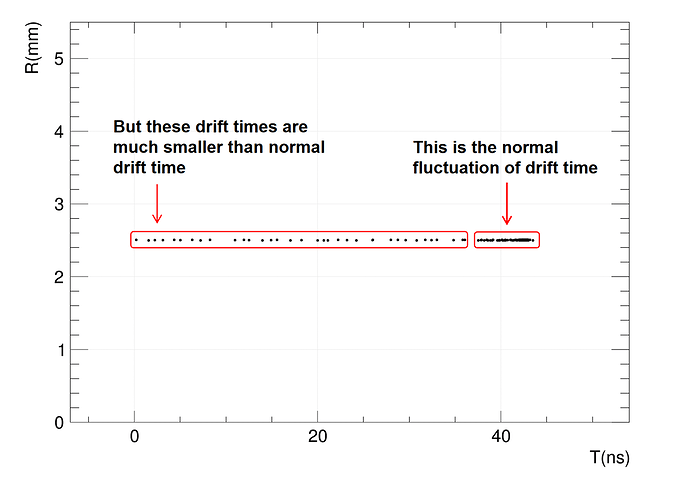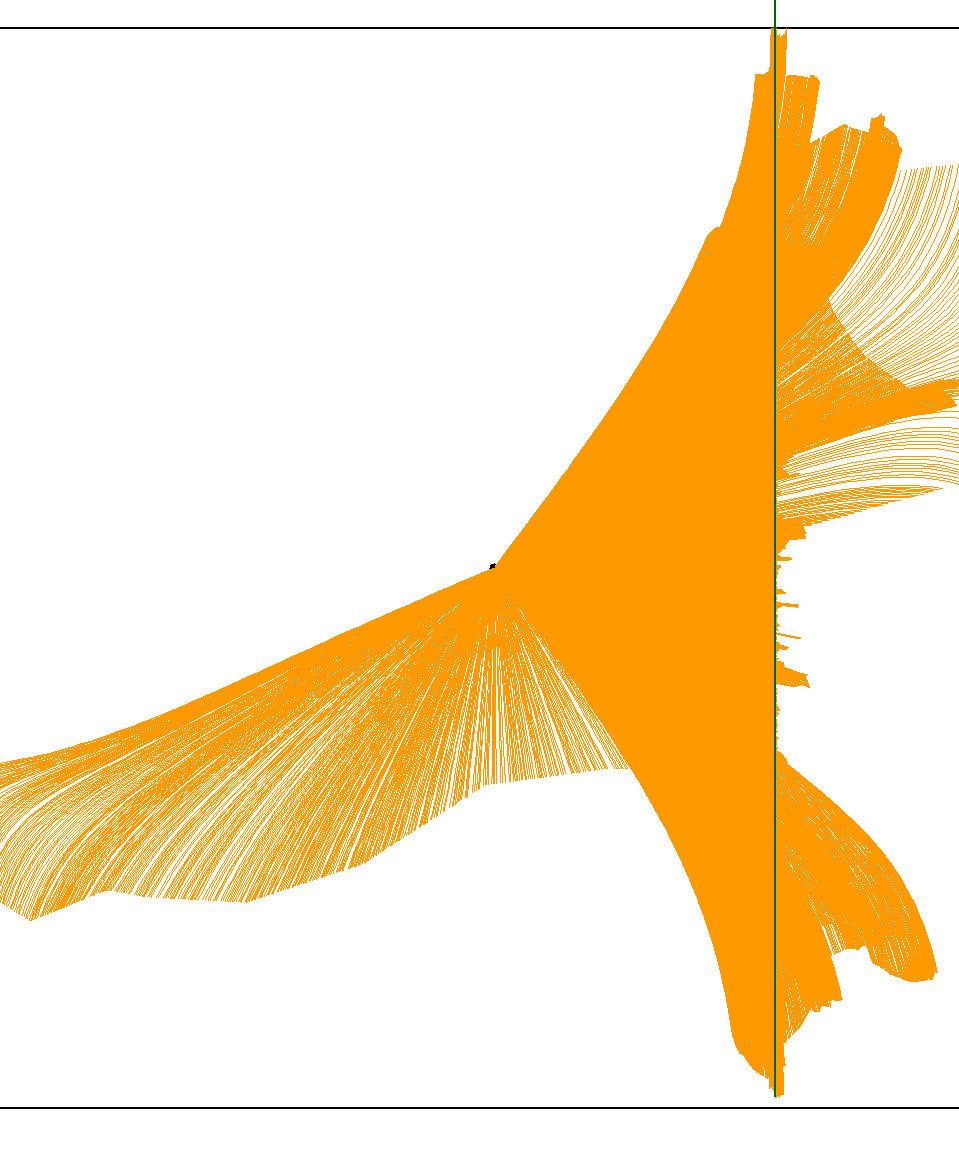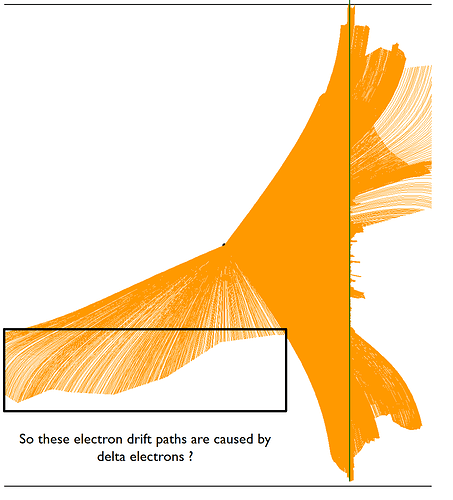When I repeatedly simulate a few thousand particles passing through the drift tube (the particles are emitted in the same position and direction), I get the fastest time for the electrons on the track to reach the anode wire. For most of these tracks, the times of the fastest electrons reaching the anode wire are close, but for some tracks, the electron drift time is substantially reduced. Is this because the particles scatter, causing the tracks to be closer to the anode wire?Thank you.
Hi,
Heed does not simulate multiple scattering of the primary particle. It does simulate multiple scattering of the delta electrons produced along the track though. And you will have fluctuations in the arrival time because the positions of the clusters along the track fluctuate from event to event.
Thank you very much.
10,000 identical tracks were simulated, and the minimum drift time of electrons about dozens of tracks was greatly reduced.
I cannot tell you off-hand why the drift time is shorter in these cases, you would need to provide a bit more information about the tracks for which you get small drift times (for instance, are they associated with large energy deposit in the gas and/or delta electrons?).
Thank you. Is the speed of delta electrons much greater than the drift speed of ordinary electrons?
What are the effects of a large energy deposit in the gas?
And why is the drift path of the electrons in the picture so strange?
I have another question. When I use alpha particle simulation, no matter how low the alpha particle energy is, the alpha particle doesn’t seem to stop and I can still see a long track.
You can see from the plot (which I assume electron drift lines accumulated over many tracks?) that there are occasionally collisions of the primary charged particle with a gas atom that knock out an electron which can then travel a significant distance and cause further ionisations along its path. Some of these ionisations might happen close to the wire.
Regarding your second question: Heed does not simulate the slowing down of the primary charged particle. If you want to simulate alphas or other particles that are stopped in the gas you can use TrackSrim or TrackTrim.
Thank you.So delta electrons, like ordinary charged particles, is very fast and can generate many primary ionized electrons.
Yes, I think so.
This topic was automatically closed 14 days after the last reply. New replies are no longer allowed.


